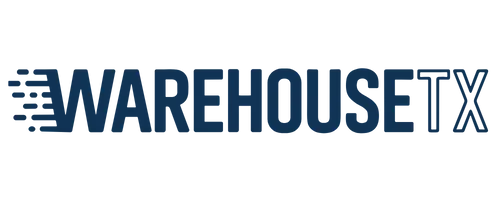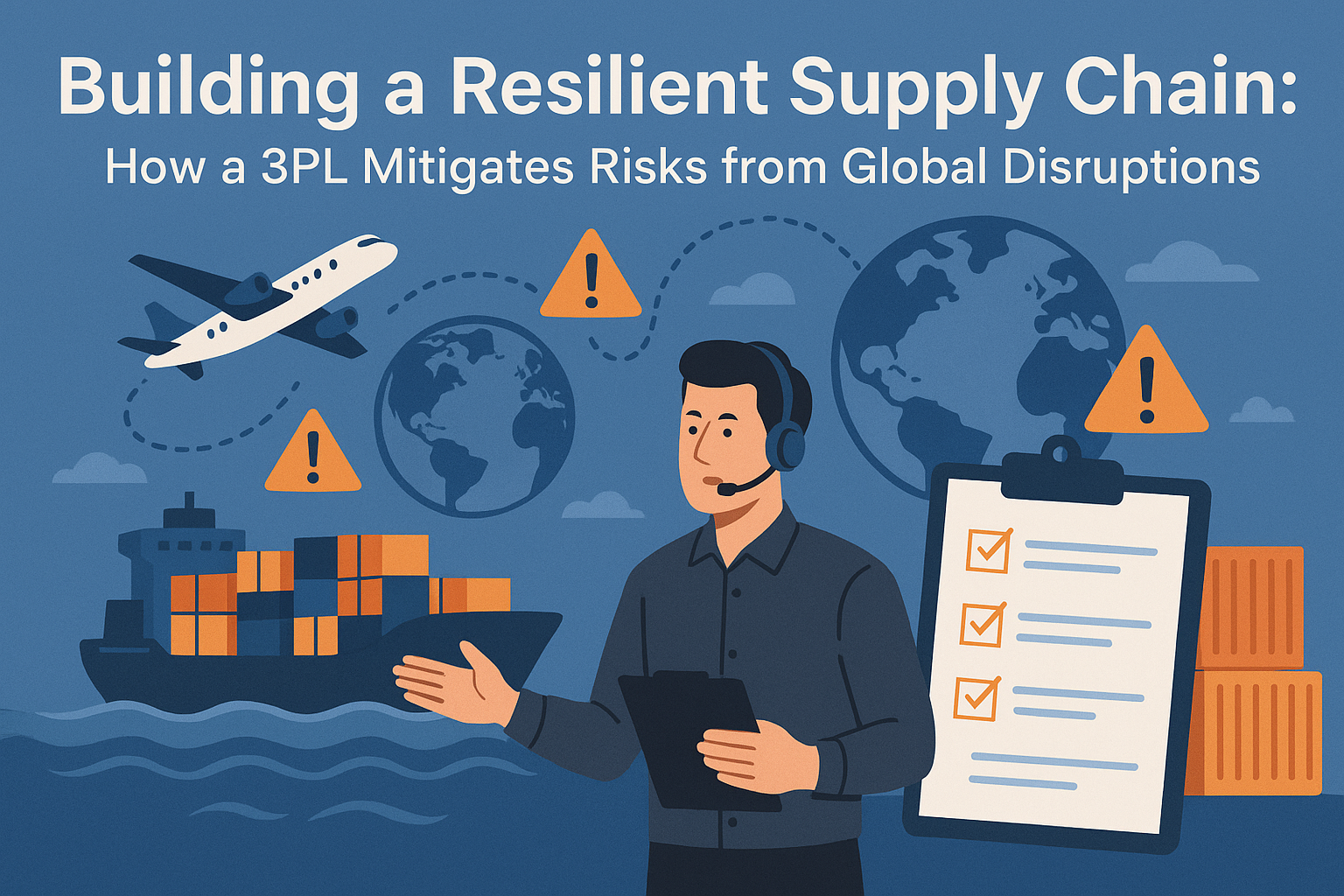In an era defined by constant change and unexpected challenges, from global pandemics to geopolitical tensions and extreme weather events, the vulnerability of traditional supply chains has been laid bare. For e-commerce businesses, a single disruption can mean delayed orders, lost revenue, and a damaged brand reputation. The question is no longer “if” a disruption will occur, but “when” and “how prepared are you?”
This is where a strategic partnership with a Third-Party Logistics (3PL) provider becomes not just a convenience, but a critical business imperative. Beyond simple warehousing and shipping, a modern 3PL acts as a dynamic risk management partner, helping you build a supply chain that is not only efficient but also remarkably resilient.
Navigating the New Normal: The Ever-Evolving Threat Landscape
The supply chain risks of today are more complex and interconnected than ever before. To understand how a 3PL mitigates these threats, we must first categorize them:
- Geopolitical and Economic Disruptions: Trade wars, tariffs, and political instability can suddenly halt cross-border shipments, create unexpected cost increases, and complicate customs processes.
- Natural Disasters: Earthquakes, floods, and hurricanes can destroy physical infrastructure, disrupt transportation routes, and severely impact inventory storage.
- Operational Failures: These include technology breakdowns, labor shortages, and unexpected issues with a single carrier or supplier. The pandemic highlighted this risk with factory closures and port congestion.
- Demand Volatility: Sudden shifts in consumer behavior, like the e-commerce boom during lockdowns, can create a surge in demand that an unprepared supply chain cannot handle, leading to stockouts and lost sales.
- Cybersecurity Threats: A cyberattack on a logistics network can cripple operations, disrupt inventory tracking, and compromise sensitive customer data.
For a business operating on thin margins and tight timelines, managing these risks internally is often a resource-intensive and often reactive process. A 3PL, however, brings proactive strategies and dedicated resources to the table.
The 3PL as Your Resilience Partner: Proactive Strategies and Solutions
A high-quality 3PL like WarehouseTX doesn’t just fulfill orders; they architect a resilient system designed to withstand shocks. Here’s a detailed look at how they achieve this:
1. Geographical Diversification and Network Optimization
Relying on a single warehouse or distribution hub is a significant risk. If that facility is impacted by a disaster, your entire operation grinds to a halt. A 3PL with a nationwide network of fulfillment centers, such as those in Texas, California, and New Jersey, provides a critical advantage.
Comparative Analysis: Single Hub vs. Multi-Hub Strategy
| Metric | Single-Hub Model (DIY or Local 3PL) | Multi-Hub Model (National 3PL Partner) |
|---|---|---|
| Risk Exposure | Extremely high. A single point of failure can lead to total operational shutdown. | Significantly lower. Inventory can be redistributed, and operations can shift to unaffected locations. |
| Shipping Costs & Speed | Higher shipping costs and slower delivery times for customers far from the hub. | Lower shipping costs and faster 1-2 day delivery to a larger portion of the U.S. population. |
| Inventory Management | Requires constant, manual balancing. Vulnerable to regional demand spikes. | Automated inventory splitting across hubs, reducing stockout risk and optimizing for demand. |
2. Advanced Inventory Management and Real-Time Visibility
In a crisis, a business’s most valuable asset is information. A modern 3PL provides a centralized platform that gives you real-time visibility into your inventory across all locations. This allows for rapid, data-driven decisions.
Case Study: Navigating a Port Congestion Crisis
Imagine a scenario where a major West Coast port faces severe congestion due to a labor dispute. A business relying on a single fulfillment center in California would face significant delays in receiving new stock, leading to backorders and customer frustration. A business partnered with a multi-hub 3PL, however, could activate a mitigation plan:
- The 3PL’s system identifies the disruption and alerts the business.
- Incoming shipments are rerouted to a different port, such as on the Gulf Coast.
- Inventory is diverted to a warehouse in Texas or Iowa, where it can be processed and shipped to customers without delay.
- This proactive measure ensures that the business maintains its service level agreements (SLAs) and avoids a massive logistical bottleneck.
3. Flexible and Scalable Operations
Resilience isn’t just about surviving a crisis; it’s about capitalizing on opportunity. A traditional, fixed-cost supply chain struggles with sudden demand spikes. A 3PL, with its scalable infrastructure and workforce, can easily accommodate these fluctuations.
Examples of Scalability:
- E-commerce Growth: A startup experiencing viral growth can seamlessly scale its fulfillment operations without needing to invest in new warehouses, equipment, or staff.
- Seasonal Peaks: A brand preparing for the holiday season can leverage the 3PL’s temporary workforce and expanded capacity to manage a 3x or 5x increase in order volume, preventing fulfillment delays that plague many businesses.
This flexibility transforms a fixed cost into a variable one, allowing businesses to adapt and grow without significant capital expenditure.
4. Return Management and Reverse Logistics
Supply chain resilience also extends to the customer experience. A smooth return management process is crucial for building trust and retaining customers. When a crisis hits, an efficient reverse logistics system becomes even more vital.
A 3PL can:
- Handle returns from multiple locations, preventing a backlog.
- Inspect and restock returned items quickly, maximizing the value of the inventory.
- Provide detailed reporting to help you identify the root causes of returns, allowing for product or packaging improvements.
This “closed-loop” approach to the supply chain ensures that value is recovered, and customer satisfaction remains high even during turbulent times.
5. Advanced Technology and Data-Driven Insights
The backbone of a resilient supply chain is technology. A premier 3PL invests in state-of-the-art warehouse management systems (WMS) and robust IT infrastructure.
Key Technological Advantages:
| Feature | Benefit for Resilience |
|---|---|
| API Integrations | Seamlessly connects with all major e-commerce platforms like Shopify, Amazon, and BigCommerce, ensuring data flows instantly and orders are processed without delay. |
| Predictive Analytics | Analyzes historical data to forecast future demand, helping to pre-position inventory and avoid stockouts before they happen. |
| Automated Backups & Redundancy | Ensures that a system failure in one location doesn’t cascade, maintaining operational continuity. |
This technological expertise is often beyond the reach of most small to medium-sized businesses and is one of the most compelling arguments for a 3PL partnership.
Future-Proofing Your Business: The Strategic Imperative
In today’s volatile market, a robust and agile supply chain is a powerful competitive advantage. It allows you to maintain service levels, reduce costs, and protect your brand reputation when your competitors are struggling to keep up. Partnering with a skilled 3PL is a forward-thinking investment in your business’s future.
By leveraging their expertise in network optimization, advanced technology, and flexible operations, you can transform your supply chain from a potential liability into a source of stability and growth, no matter what challenges the global landscape throws your way.
To learn more about how a partnership with WarehouseTX can help you build a more resilient and efficient supply chain, get a free quote today.
—
Frequently Asked Questions (FAQ)
What is supply chain resilience?
Supply chain resilience is the ability of a supply chain to prepare for, respond to, and recover from disruptions. It involves having the flexibility and foresight to absorb unexpected shocks, maintain continuity of operations, and get back to normal as quickly as possible.
How does a 3PL improve my supply chain’s resilience?
A 3PL improves resilience through several key strategies: leveraging a distributed network of warehouses to mitigate regional risks, providing advanced technology for real-time visibility, and offering scalable operations to handle demand fluctuations without a hitch. This transforms a reactive approach into a proactive one.
Is a multi-hub strategy only for large businesses?
Not at all. While large enterprises benefit, a multi-hub strategy is crucial for growing e-commerce businesses of all sizes. It allows them to compete with larger companies on shipping speed and cost while simultaneously building in a layer of risk mitigation that would be too expensive to manage on their own.
How do I get started with a 3PL partnership to improve resilience?
The best first step is to assess your current supply chain’s vulnerabilities. Then, contact a reputable 3PL like WarehouseTX to discuss your specific needs. Look for a partner with a strong track record, a nationwide network, and transparent technology. They will work with you to create a customized plan that builds resilience from the ground up.

